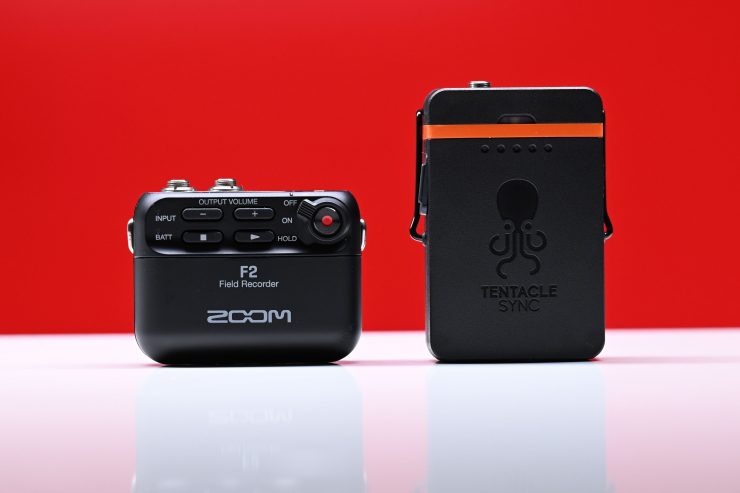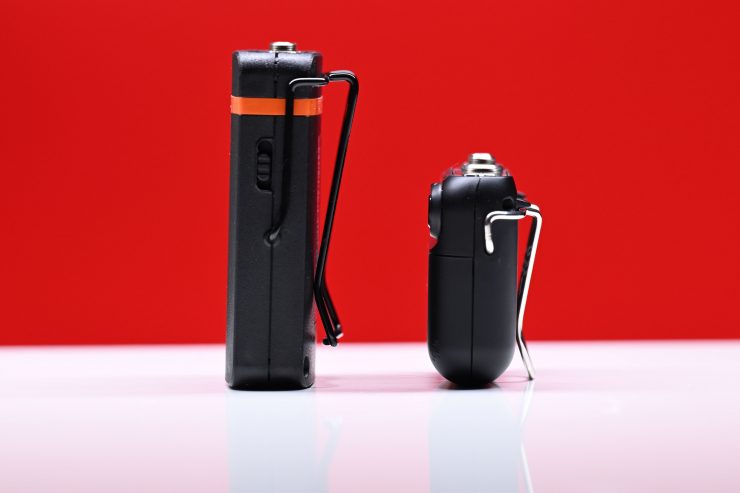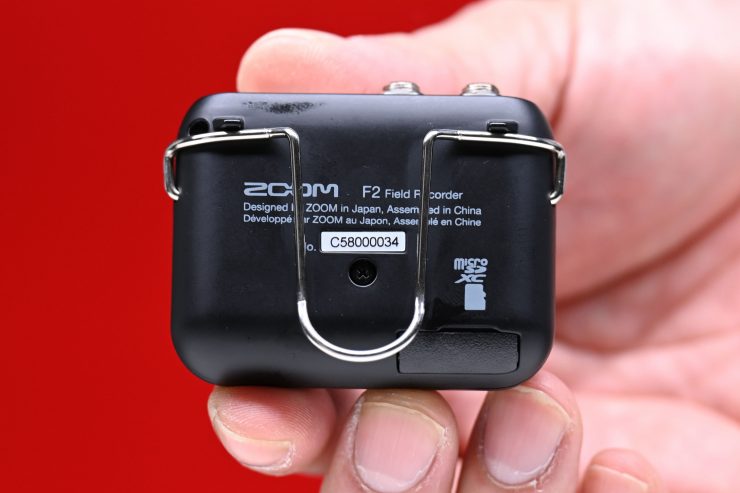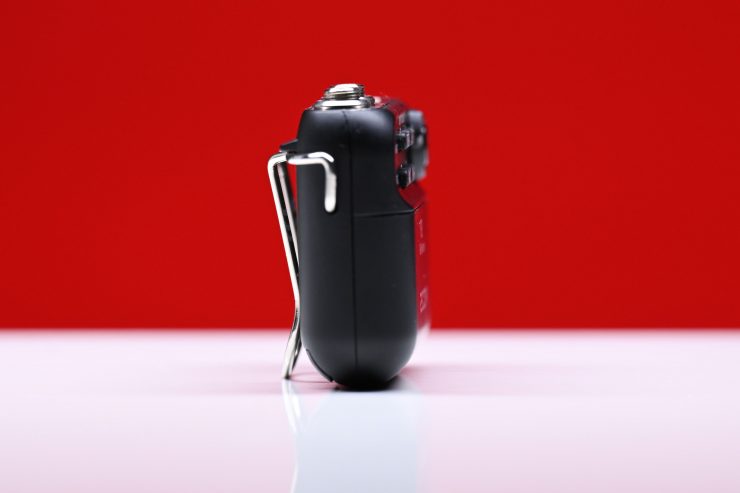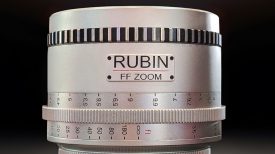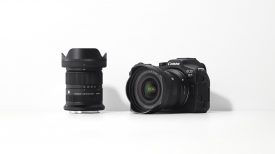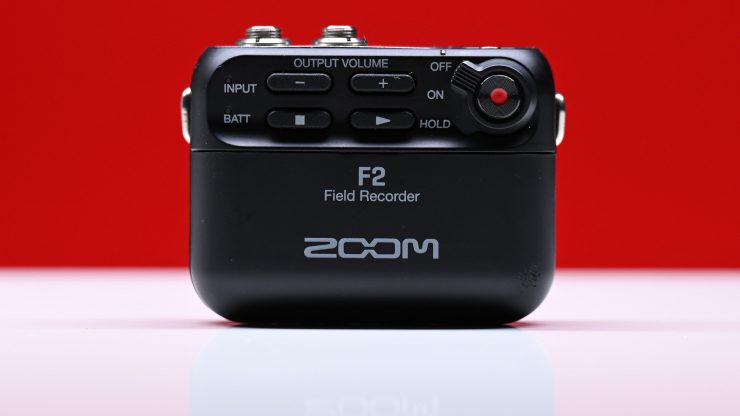
The Zoom F2 Field Recorder was announced in November last year. It came around the same time as Tentacle Sync officially unveiled its Track E Pocket Audio Recorder.
The Zoom F2 is an ultra-compact 32-bit float portable field recorder. Unlike the Tentacle Sync Track E, the Zoom F2 comes in two different versions. The two versions are:
Both F2 models include a lavalier microphone. The only difference between the two versions is that the Zoom F2-BT features Bluetooth. Having Bluetooth allows for wireless timecode synchronization with a Timecode Devices UltraSync BLUE.
F2 KEY FEATURES
- Light and compact audio recorder
- 32-Bit Float recording for full dynamic range and clip free recording
- No gain adjustment necessary
- Records 44.1kHz/32-bit float or 48kHz/32-bit float audio files
- Rec Hold function to avoid accidental operation of buttons
- Stereo ⅛” Mic/Line In mini phone jack with Plug-in power (2.5V)
- Stereo ⅛” Phone/Line Output jack with dedicated volume control
- 80 Hz low cut filter
- High precision internal clock (±0.5ppm) to avoid audio and video syncing issues
- Wireless timecode synchronization (F2-BT model only)*
- Records directly to micro SD and SDHC cards up to 512 GB
- USB-C for connection to F2 Editor for settings
- Built-in Bluetooth for connection to the F2 Control app for settings adjustment and remote transport control (F2-BT model only)
- Runs on only 2 standard AAA alkaline, Lithium, or NiMH rechargeable batteries, or AC adapter (AD-17)
- Up to 15 hours of operation (14 hours on the F2-BT) with two AAA alkaline batteries
- *F2-BT connection to UltraSync BLUE device by Timecode Systems is required.
32-bit Float
The Zoom F2 has the ability to record 32-bit float audio. A lot of recent audio recording devices that have come to market feature 32-bit float.
It is best to think of 32-bit float in the same way that you think about RAW video recording. The main benefit of 32-bit float is that your audio recordings can’t clip. Conversely, if your audio levels are too low, you can bring the levels back up without almost no additional noise being added. Above you can see another demonstration from SoundDevices that shows you exactly how it works.
By using the Zoom F2 and simultaneously transmitting audio you can get the best of both worlds. You can record a reference track to your camera or audio recorder, while also recording a 32-bit float file directly to a MicroSD card in the Zoom F2. What you need to clearly remember is that the audio you are transmitting via a TX unit is not 32-bit float.
The only real downside to 32-bit float is that it uses up to 33% more storage space than conventional 24-bit files. You get approximately 30hrs (24-bit) and 23hrs (32-bit) on a 16GB micro SDcard. If you are used to shooting video, this amount of data is tiny in comparison.
Now, unlike the Tentacle Sync Track E, which gives you the option of recording 32-bit float or regular 24-bit audio files, the Zoom F2 can only record in 32-bit float.
With the Zoom F2 you can feed the headphone output into a TX unit and then record a track in your camera or audio recorder for either reference or as your main audio source. In my personal opinion, it is better to use the Zoom F2 recording as your main audio source and not rely on the outputted version that will go to your camera. You do, however, need to be aware that the output going to a TX unit isn’t going to be 32-bit float audio. If this audio gets clipped or is too low you may well not be able to salvage it.
As I just mentioned, you can use the headphone output to send a feed into a wireless TX unit. This allows you to not only record the audio from the Zoom F2 to a camera, audio recorder, or mixer/recorder, but most importantly it allows you to monitor the audio. Stand-alone audio recording devices have their place, but if you can’t monitor the audio that is being recorded then you open yourself up to lots of potential issues. You wouldn’t record video with your eyes shut, so why would you want to record audio that you can’t hear.
What do you get?
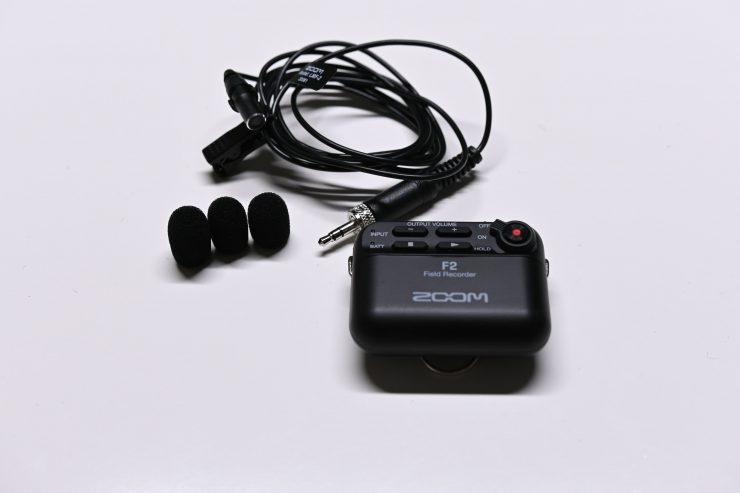
The Zoom F2 recorder comes with:
- Zoom F2 Ultra-compact Portable Field Recorder with Lavalier Microphone
- LMF-2 Lavalier Microphone
- 3 x WSL-1 Windscreens
- Zoom MCL-1 Clip for LMF-2 Lavalier Microphone
- 2 x AAA Batteries
- Steinberg WaveLab Cast Software (Download)
- Limited 1-Year Warranty
Size & Weight
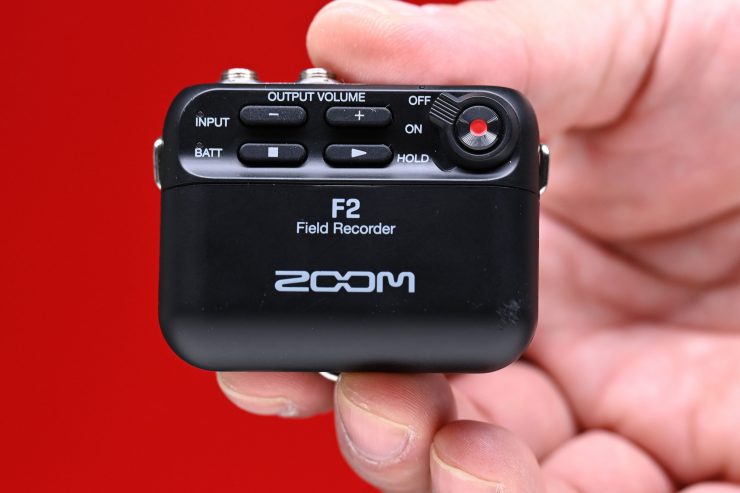
The Zoom F2 is relatively small. It weighs in at 32g / 1.1 oz (Without Batteries). So how does this weight compare to a Tentacle Sync Track E?
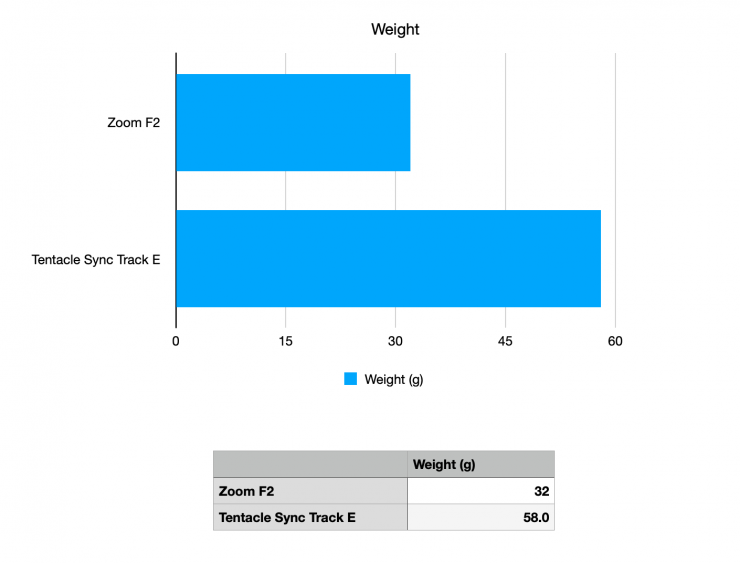
As you can see, the Tentacle Sync Track E weighs almost twice as much as the Zoom F2.
Above you can see how it compares in size to a Tentacle Sync Track E.
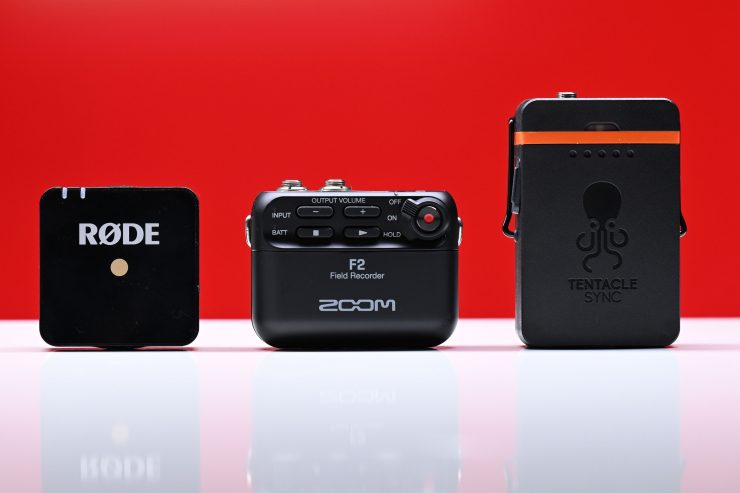
Above you can see how it compares in size to a Tentacle Sync Track E and a Rode Wireless GO.
The Zoom F2 also comes with a detachable belt clip.
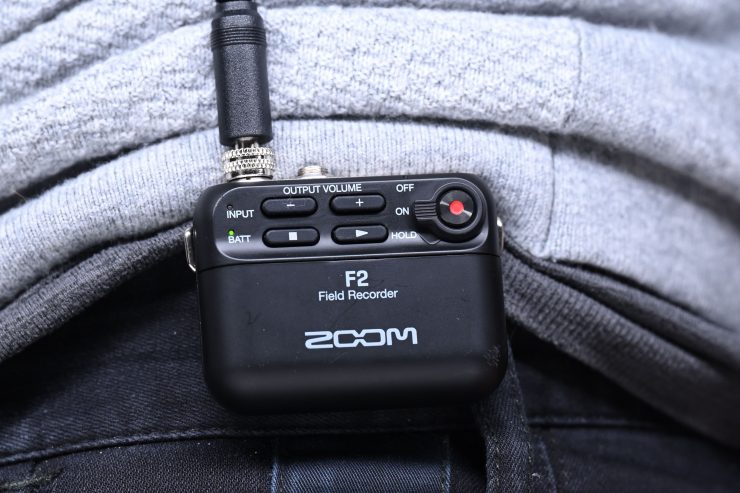
The only problem with the belt clip is it is very stiff which makes it hard to actually put on a belt or someone’s pants. The included lavalier microphone’s connector is also quite tall so you need to be careful it doesn’t get bent or broken if someone sits down.
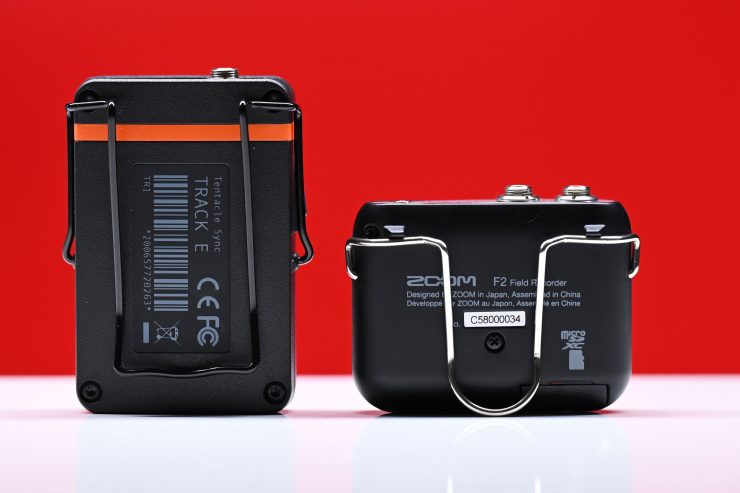
I found the belt clip that comes with the Tentacle Sync Track E to be a lot better. Better in the way that it is easier to use.
Recording Settings
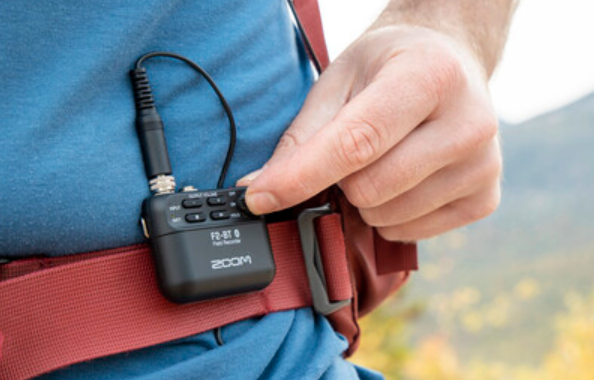
The F2 boasts two high-quality recording resolutions to choose from—32-bit / 44.1 kHz or 32-bit / 48 kHz, both in mono uncompressed WAV format. No data compression means that no quality is lost in the creation of the audio files. You can use the onboard 80 Hz low-cut filter to reduce rumble and bass buildup in your recordings.
INPUT
| CONNECTOR: | 3.5 mm stereo mini (with screw lock) Supports plug-in power (2.5 V) |
| INPUT GAIN: | None (dual AD conversion system) |
| INPUT IMPEDANCE: | 2 kΩ or more |
| MAXIMUM INPUT LEVEL: | −5.5 dBu |
OUTPUT
| CONNECTOR: | 3.5 mm stereo mini (with screw lock) |
| MAXIMUM OUTPUT LEVEL: | 20 mW + 20 mW (into 32Ω load) |
Record Direct to microSD Cards
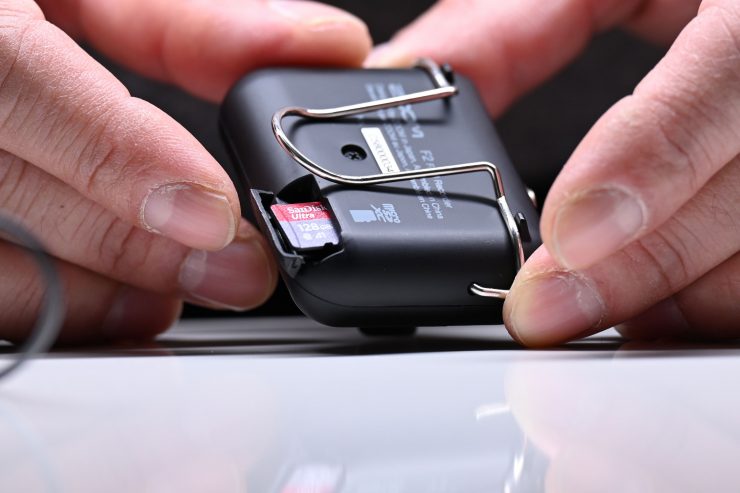
You can record directly to a microSD/microSDHC/microSDXC card (available separately) for up to 512GB of storage space.
Low-Profile Lapel Mic with Locking Connector
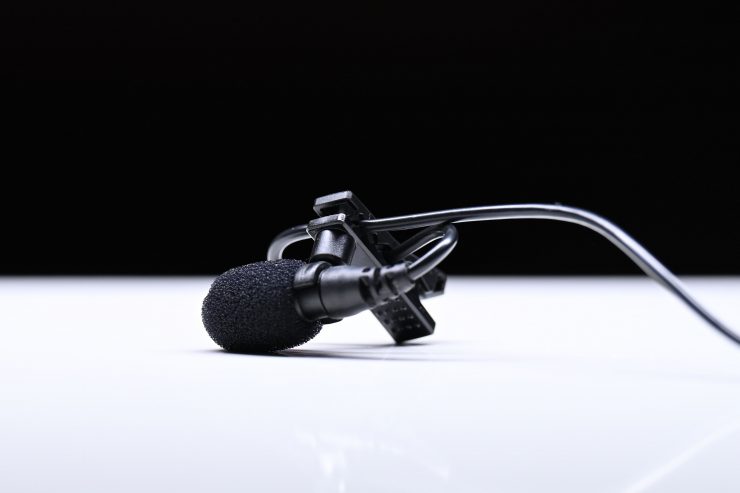
Included is an omnidirectional polar pattern lavalier microphone with a 3.5mm locking connector. The omnidirectional polar pattern is designed to deliver consistent audio pickup from all directions, which Zoom claims, yields dependable voice capture even when the subject turns their head or the microphone changes position. Three windscreens are supplied to help in the reduction of light wind noise. Other brands of 3.5mm lavaliers can be used with the Zoom F2.
| CONNECTOR: | 3.5 mm stereo mini (with screw lock) |
| DIRECTIONALITY: | Omnidirectional |
| SENSITIVITY: | –32 dB/Pa at 1 kHz |
| MAXIMUM SOUND PRESSURE INPUT: | 115 dB SPL |
| CABLE LENGTH: | 160 cm |
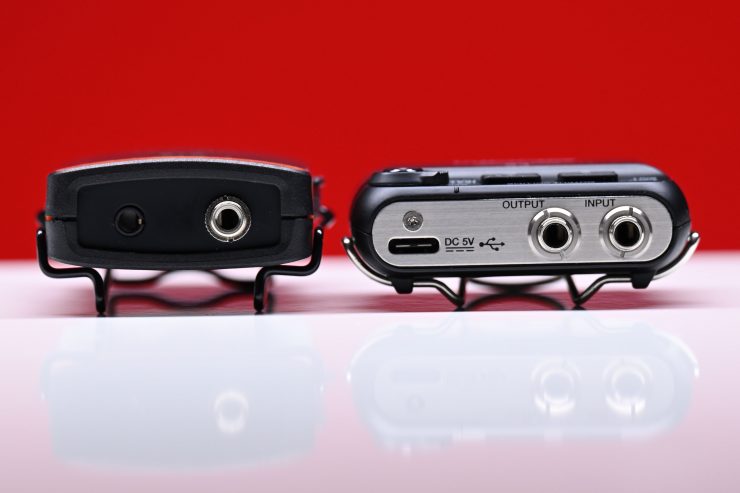
It is nice having a locking connector for both the microphone input and the headphone output. The Tentacle Sync Track E only has a locking connector on the microphone input and not on the headphone out.
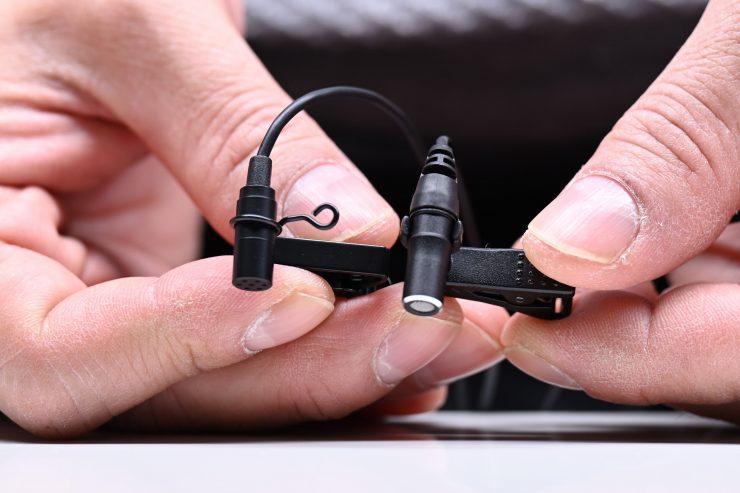
The included lavalier microphone is quite a bit larger than the one that comes with the Tentacle Sync Track E. This does make it stand out more and it also makes it harder to hide.
Mic/Line Input with Plug-In Power
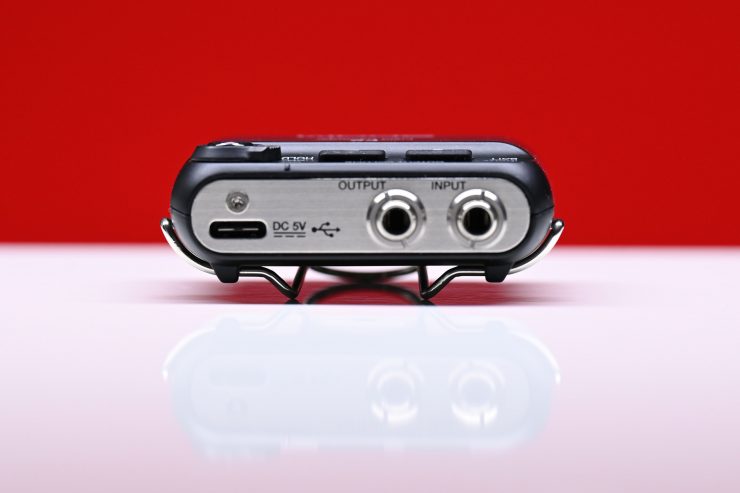
The F2 can accommodate mic or line-level signals via its locking 3.5mm stereo mini-jack input. Since it supplies 2.5V plug-in power, you’re free to use common condenser mics such as lavaliers, headsets, and earsets.
Headphone/Line Output with Volume Control
A locking 3.5mm stereo output jack with dedicated volume up/down buttons enables straightforward routing to your camera, DSLR, secondary recorder, or even headphones for easy monitoring. You would think that being able to output and record at the same time wouldn’t be possible if you bought the Zoom F2 in the United States due to potential patent infringement, but apparently from all reports, you can. Zoom doesn’t sell a USA specific version of the Zoom F2.
The Zoom F2 that I tested was purchased in Japan.
Power
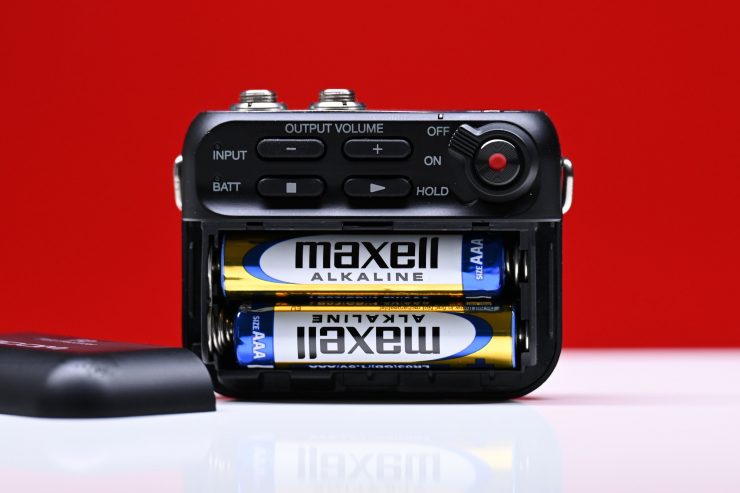
The F2 is powered with two AAA alkaline, Lithium, or NiMH rechargeable batteries (alkaline included), a Zoom AD-17 power adapter (available separately), or a USB Type-C battery pack (available separately). You can get up to 15 hours of run time using AAA batteries.
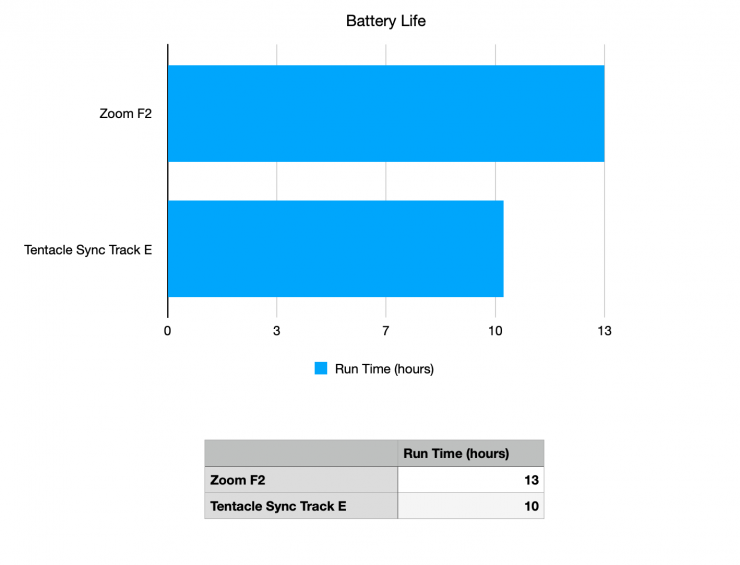
As a comparison, the Tentacle Sync Track E has an internal battery that lasts for 10 hours.
Whether or not you prefer an in-built battery or being able to change batteries will probably depend o your individual needs. Being able to run the Zoom F2 from interchangeable, readily available batteries certainly has its upside. With a built-in battery, there is always the chance that it runs out of power or you forgot to charge it.
Set-up & Ease of use
The Zoom F2 features one-touch buttons for record, play, stop, and volume up/down. There is no display and no menus. The only visual references you have are LEDs that provide an indication that it is recording, battery status, and power. You can’t actually set any levels on the Zoom F2. You just hit record and that is it. As the Zoom F2 only records in 32-bit float it probably doesn’t need any audio level controls.
The F2 is equipped with a high-precision internal clock (±0.5ppm) to avoid audio and video sync issues.
The Hold switch will keep it recording no matter what button you press.
The files can be transferred to a computer via USB, then you can use the supplied Steinberg WaveLab Cast software to edit, enhance, mix, and export your audio.
Real World Use
The Zoom F2 is reasonably simple to use and if you are working without a dedicated sound recordist it can be a real-life saver, especially for documentary, news, or event coverage where audio can be very unpredictable. The only problem with the standard Zoom F2 version is that you cannot control the recorder through the F2 Control app. The F2 Control app can only be used with the Zoom F2-BT. In saying that, you can’t adjust the levels on the Zoom F2 anyway, so using the app probably has limited appeal anyway.
Depending on what type of microphones you usually use, the biggest downside is that you are going to have to live with the quality of the included lavalier microphone if you choose to use it. While the included lavalier is actually pretty decent, it may not be as good as other lavaliers that you may be used to using. Swapping out the included microphone for something better will certainly make a difference.
Above you can hear a comparison between internal 32-bit float recordings from the Zoom F2 and the Tentacle Sync Track E using their included microphones. No corrections have been made to any of the audio. The audio for both units was recorded at the exact same time under the exact same conditions. I’ll leave it up to you to decide which one you think sounds better.
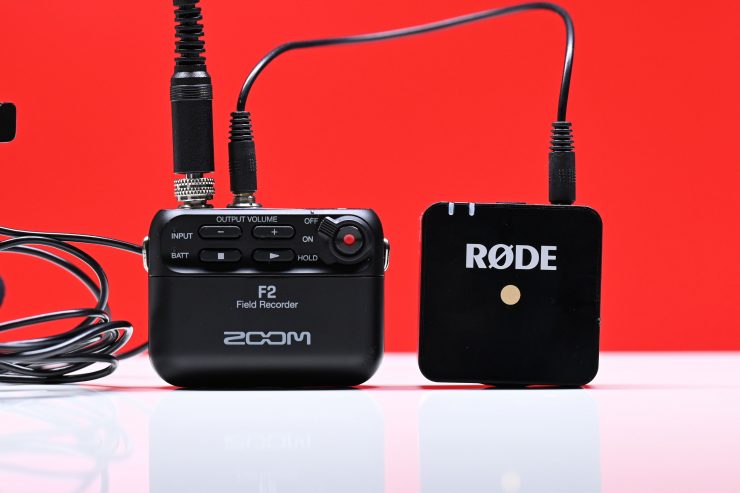
Having the ability to record 32-bit float audio to a small device that you can also monitor (as long as you are attaching a TX unit to the Zoom F2) is super handy. It is also nice to know that the only monitoring you need to do is to make sure there isn’t wind noise or rubbing on clothes, etc. This means you can concentrate on shooting and not have to endlessly be worrying about levels.
You do have to use the output volume controls on the Zoom F2 to lower the output level quite a lot. I found I needed to keep pressing the – button until the level was ok that I was receiving on my camera. On the camera (a Panasonic S1H) I had the audio input level set to -18db.
So what does the quality of a transmitted recording sound like? Well, that is going to depend on a lot of factors, including what TX units you are using and what camera you are recording to. What I can do, is to let you listen to the difference between the outputted audio from the Zoom F2 and the Tentacle Sync Track E that was then recorded in-camera using the Rode Wireless GO TX and RX units. I am using the included lavalier microphones that come with both units. No audio adjustments have been made.
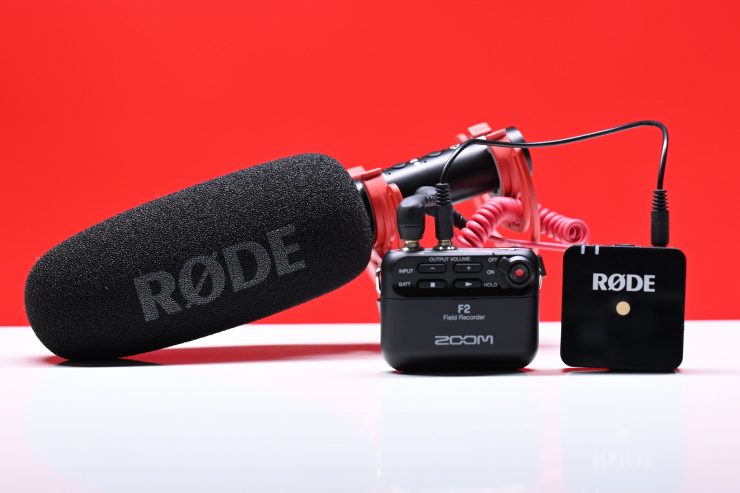
The Zoom F2 also works well with microphones such as the Rode VideoMic NTG. For an interview scenario, you can plug the Rode into the Zoom F2 and then plug the headphone output into a Wireless GO. Yes, it does mean you have to plug two devices into the Zoom F2, but the benefits arguably outweigh the inconvenience.
Above you can hear audio tests where I compare the Zoom F2 and the Tentacle Sync track E when I had had the Rode VideoMic NTG attached. You can listen to the 32-bit recording as well as the recording that was being done in-camera. The outputs of both the Zoom F2 and the Tentacle Sync E were plugged directly into the camera.
The nice thing about 32-bit float audio recordings is that you don’t have to do anything special or process them with any type of software. You just bring them into your NLE and you are good to go. If you want to, you can use Zoom’s F2 Editor instewad.
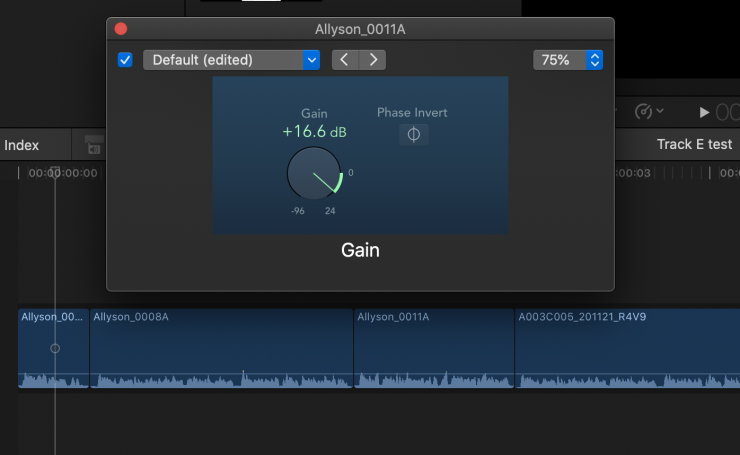
I found in FCPX the easiest thing to adjust the levels of 32-bit files was to just put an Audio Gain effect on those clips and then make my adjustments.
USB File Transfers & Settings Editor
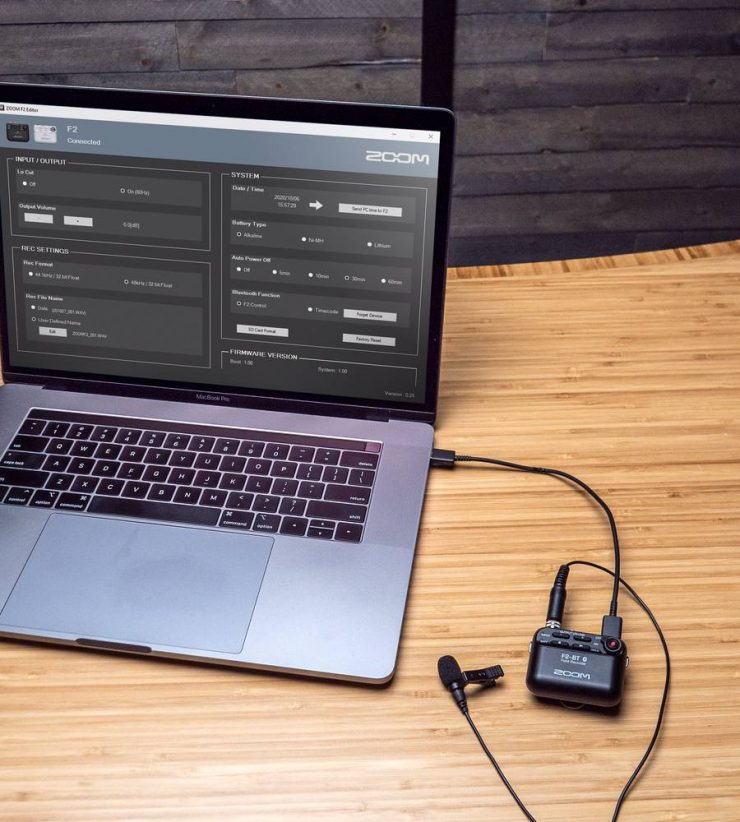
The F2 Editor lets you adjust settings, format SD cards, and more from your Mac or Windows computer. Since the F2 has a USB Type-C port, you can connect it to your computer via a USB cable (available separately) and launch the editor. The USB connection also makes it easy to transfer files to your computer.
Price & Availability
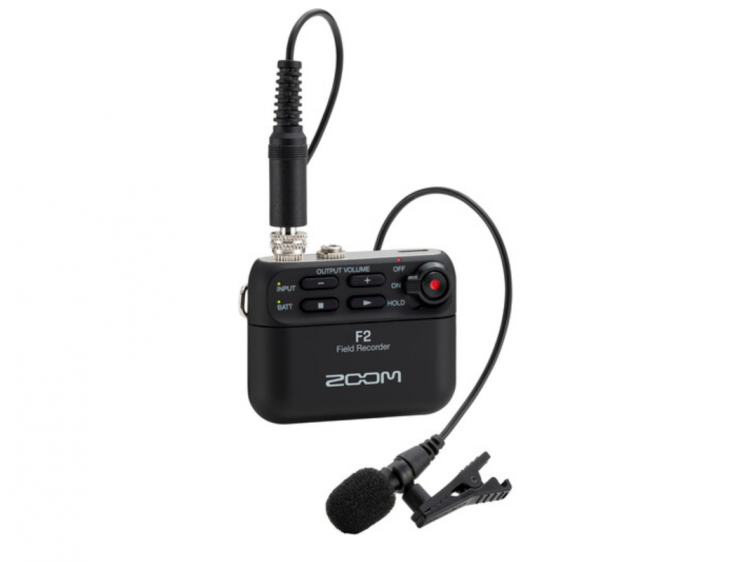
The base Zoom F2 reatils for $149.99 USD. This makes it a very affordable solution for recording 32-bit float audio.
The Zoom F2-BT retails for $199.99 USD. What you need to remember is that the Zoom F2-BT requires another device for timecode synchronization. The Zoom F2-BT only started hipping at the very end of 2020.
Competition
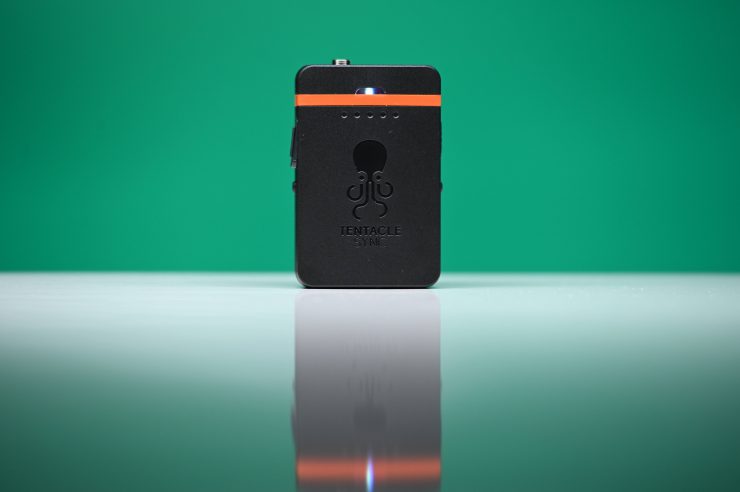
The Zoom F2 versions face direct competition from the Tentacle Sync TRACK E Pocket Audio Recorder with Timecode that retails for $349.00 USD.
However, the one that competes with the Tentacle Sync Track E is the F2-BT model which offers wireless timecode synchronization when used with an UltraSync BLUE device by Timecode Systems.
The base Zoom F2 doesn’t really compete against the Tentacle Sync option. In a lot of ways, the base Zoom F2 doesn’t have a direct competitor.
Conclusion
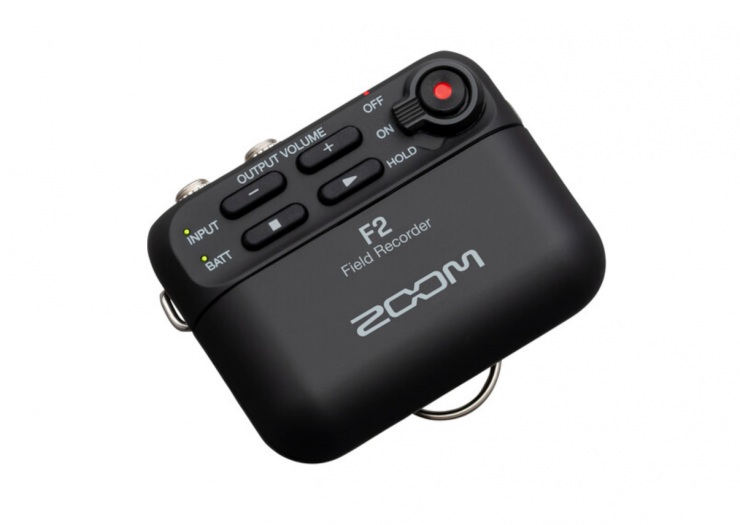
The Zoom F2 can come in very handy in a lot of situations. It is an affordable and relatively easy way to record 32-bit float audio.
The ability to be able to output a signal and not only monitor it, but also record it, along with being able to record a 32-bit float file internally to the Zoom F2 makes this an extremely useful device.
Yes, the base version doesn’t have any way of jam syncing timecode and that may or may not put you off depending on what your requirements are. The audio quality is reasonably good, especially for a device that costs under $150 USD.
Like what we do and want to support Newsshooter? Consider becoming a Patreon supporter and help us to continue being the best source of news and reviews for professional tools for the independent filmmaker.

